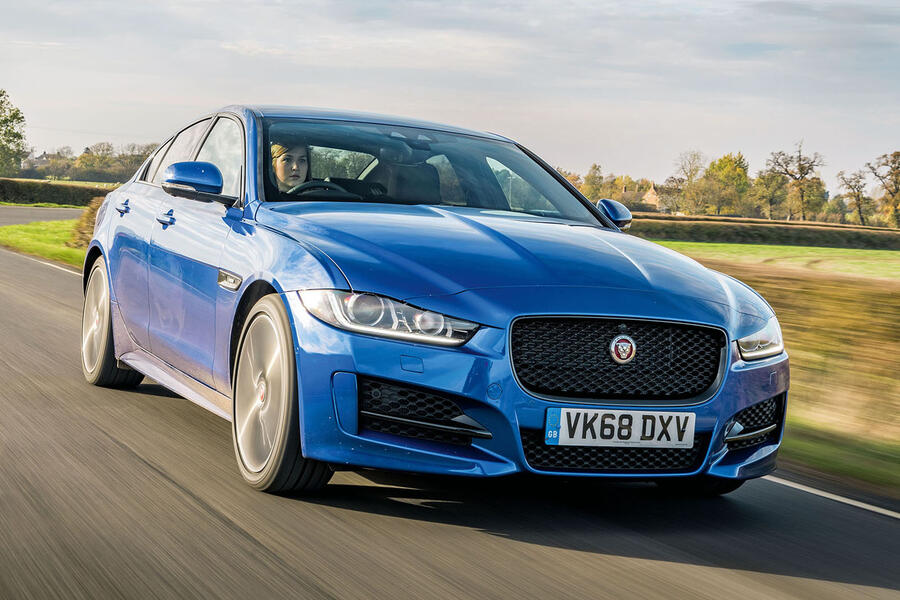Jaguar Land Rover bosses are facing a decision on how to replace the Jaguar Jaguar XE and Jaguar XF models, which are currently selling in very small numbers and were outsold by the electric Jaguar I-Pace in November last year.
Autocar understands the company is focusing on how it should regroup and steady itself after a tumultuous 2018, with a review of Jaguar’s future product plans at the top of the list. While facelift versions of the cars are just months from the showroom, it is believed that company planners are now working on a strategy for the launch of new replacements for early 2023.
Sources say that JLR is starting with a blank sheet of paper for the project. The options include the XE and XF being merged into a single model, and any new vehicle could be either an electric model or a plug-in hybrid.

Meanwhile, the all-new XJ due next year is expected to be fully electric, which Jaguar hopes will appeal for luxury chauffeur-driven motoring in China and beyond.
JLR boss Ralf Speth recently told the press that low sales of today’s XE, XF and XJ models would not force the company to leave the saloon market because ‘low-profile’ vehicles will be needed to adhere to the planned EU CO2 regulations in 2030 and beyond.
The European Commission recently announced that average CO2 emissions of new cars registered in the EU will have to be 15% lower in 2025 and 37.5% lower in 2030, compared with the emission limits valid in 2021, showing the challenge ahead for a firm selling big and heavy SUVs.
























Join the debate
Add your comment
Simple and focussed...
The product range needs to be simple and focussed- just like Volvo have done with less resources:
JAGUAR
1- XE MUST become a 2 door coupe and convertible range with 2 litre, 3 litre and 5 litre petrol / hybrid powertrains
Make it exciting, modern colours, appealing to young professionals etc- including entering the BTCC and / or WTCC series' with a high profile, all guns blazing 3 car team.
2- XF- the original model was 'class'- the materials, cabin, 'whooo' moments need to return. Clearly define the range into just 2 variants- 'Sport' and Luxury- using the same powertrains as XE
OFFER BOTH XE AND XF with a 5 year all-singing-all-dancing warranty- which is 2 years longer than Audi, BMW or Mercedes
3- Discovery Sport / Discovery- both need simplifying;
- 'Pure' version into a commercial variant- rubberised floor and loadspace- steel wheels and chunky all terrain tyres- no glass beyond B post- with load space divider. Extend and raise the rear roof line or simply make it into a truck cab. Options from this could then include winches, safari roof racks, snorkels, side steps and all terrain tyres with added under body protection. Simple colours- Tangiers Orange (G4 heritage), White, Black and matt grey
At a stroke this gets Land Rover into the 'utility' market- regardless of the forthcoming Defender- which will start around £40k- the issue is the HUGE market beneath this that exists but Land Rover have no model to fit it- but all the 'pedigree' arguably to really take this market for its' own.
- SE- half leather, mid level trim- same as current models
- Premium- windsor leather, high quality ICE, exclusive colours etc
Audi, BMW, Mercedes Benz and Volvo all have narrow trim levels in their home, USA, China and the UK markets. It clearly differentiates between models and types of buyers and makes product selection really easy and takes confusion away.
Evoke, Velar, Range Rover Sport and Range Rover are great cars with good sales (apart from the Evoke running out after 6 years of sales and badly needing a refresh).
Defender will storm the market and sell faster than they can be built- there will be nothing like it in the market- but it needs reliability at its' core.
F-type is 20-30% too expensive and sits too high to be affordable for mass market and not expensive enough to make it truly desirable and exclusive enough. Re-price, re-trim, re-launch at the same time as a NEW XKR that should sit in this space instead as a true 2+2 priced where F Type currently sits.
So this is my plan.... if only I were in charge...
Can the XE
The XE, although its a nice car dynamically, has less interior space than the previous x-type. JLR should stop production of the XE & concentrate on the XF. They could also do a long wheel base version of the XF to cover sales that the XJ might not acheive due to its forthcoming EV drivetrain.
Trouble at Mill
Jagaur XE and XF volume sales can't justify two models. So broaden XF appeal by a wider trim scale.
From Driver Experience, through Modern Minimalist, Elegant Comfort to Indulgent Luxury. If volume returns, look to a LWB variant.
Arguably, space is the ultimate luxury. Examine market, in particular Chinese market, needs.
There is an opportunity in building a sub e Pace SUV if you want 1/A/A1 competitor volumes.
Examine the opportunity of a premium Jaguar/MX5 varianr with a 200+ BHP Ingenium.